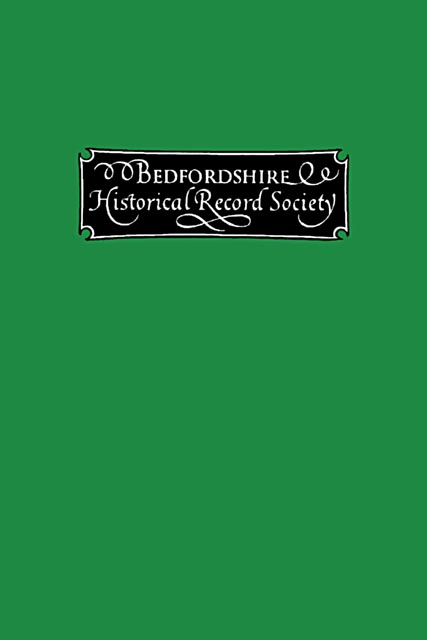Book contents
- Frontmatter
- Contents
- Abbreviations and Symbols
- The Shefford Beaker: circa 1800 B.C.
- The Morteyn Family in Bedfordshire
- The Shire of Bedford and The Earldom of Huntingdon
- The Later Descent of Wingate of Harlington
- The Disseisins by Falk de Breauté at Luton
- An Elizabethan Inquisition Concerning Bondmen
- Roll of The Justices in Eyre, 1240
- A List of Bedfordshire Apprentices: 1711 - 1720
- The Commune of Bedford
- Addendum I. “The Shire of Bedford and The Earldom of Huntingdon.”
- Addendum II. “The Disseisins of Falk de Breauté.”
- A Hand List of The Bedfordshire County Muniments : Prepared by The County Records Committee
- Index
The Morteyn Family in Bedfordshire
Published online by Cambridge University Press: 14 July 2023
- Frontmatter
- Contents
- Abbreviations and Symbols
- The Shefford Beaker: circa 1800 B.C.
- The Morteyn Family in Bedfordshire
- The Shire of Bedford and The Earldom of Huntingdon
- The Later Descent of Wingate of Harlington
- The Disseisins by Falk de Breauté at Luton
- An Elizabethan Inquisition Concerning Bondmen
- Roll of The Justices in Eyre, 1240
- A List of Bedfordshire Apprentices: 1711 - 1720
- The Commune of Bedford
- Addendum I. “The Shire of Bedford and The Earldom of Huntingdon.”
- Addendum II. “The Disseisins of Falk de Breauté.”
- A Hand List of The Bedfordshire County Muniments : Prepared by The County Records Committee
- Index
Summary
Since I contributed an article in 1922 to ‘The Genealogist,’ upon the Bedfordshire Morteyns, I have made further investigations which have produced additional material; these have enabled me to correct several statements there made, and to republish this account of the family with corrections and additions. I must, however, ask indulgence for this article, as it was written in Southern Europe, far from the great reference libraries and from my notes, which I have been collecting concerning the family for a number of years.
The family derives its name from Mortain in Normandy, a town of some importance in the Cotentin, not far from Avranches. Robert de Morteyn, the founder, first appears in England in the reign of Henry I, as a tenant in Nottinghamshire of William Peverel, and a good account of the early members of the family will be found in Thoroton's Nottinghamshire, based upon the Lenton Cartulary and Dugdale's Monasticon. Robert de Morteyn, the first traced, was present at the founding of Lenton Priory by William Peverel, and then gave to the Lenton monks 10s. of rent or 10 solidates of land. Robert was dead by 22 Henry II (1176), when Adam de Moretonia appears in the Nottinghamshire Pipe Roll; subsequently Eustace de Morteyn, called lord of Wollaton, confirmed to Lenton Priory the alms which Robert de Morteyn, his grandfather, and Adam his father, gave them; and Adam de Morteyn, son of Adam, and brother of Eustace, also confirmed this grant. In addition to Adam, Robert had also a son Hugo, who, with his brother Adam, witnessed a confirmation made before 1175 by Robert son of Philip (de Baseford) to Eustace de Brocolveston (Broxtow, co. Notts.), of lands, etc., in Baseford and Essebia. The charters of Sempringham printed in ‘The Genealogist,’ show that Adam, son of the first Robert, was of age and married between 1155 and 1165, and that he had a brother William, and probably a brother Geoffrey; and from the same Charters he appears to have been alive as late as 1180; while the Pipe Roll for 1185/6 shows that he was then dead.
Eustace de Morteyn was fined 20 marks in 1194, as one of the knights of John Count of Mortain, for having the king's goodwill; in 1197 he owed 100s. scutage for 3 fees of the honor of Peverel and for not serving beyond seas.
- Type
- Chapter
- Information
- Publisher: Boydell & BrewerFirst published in: 2023

